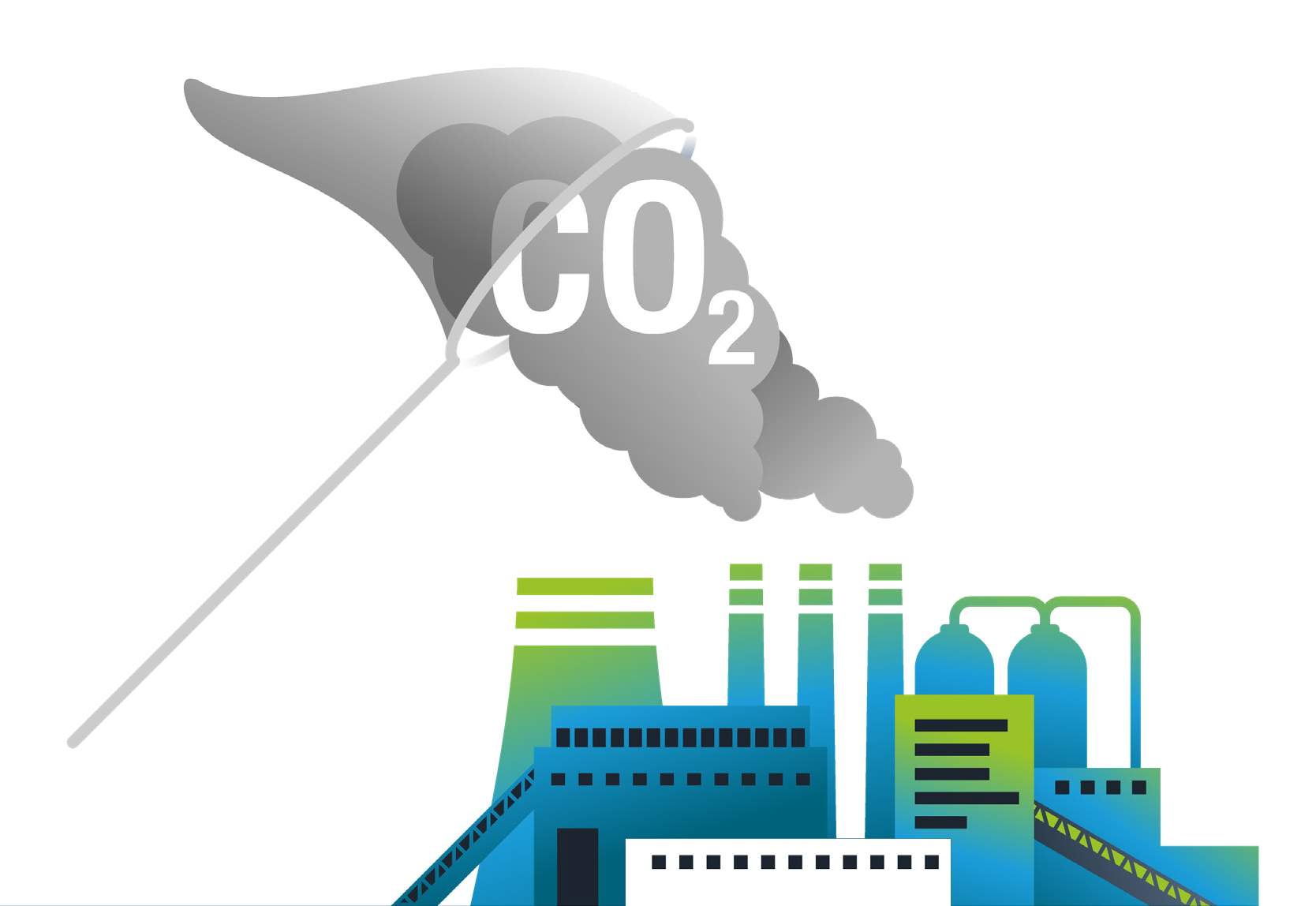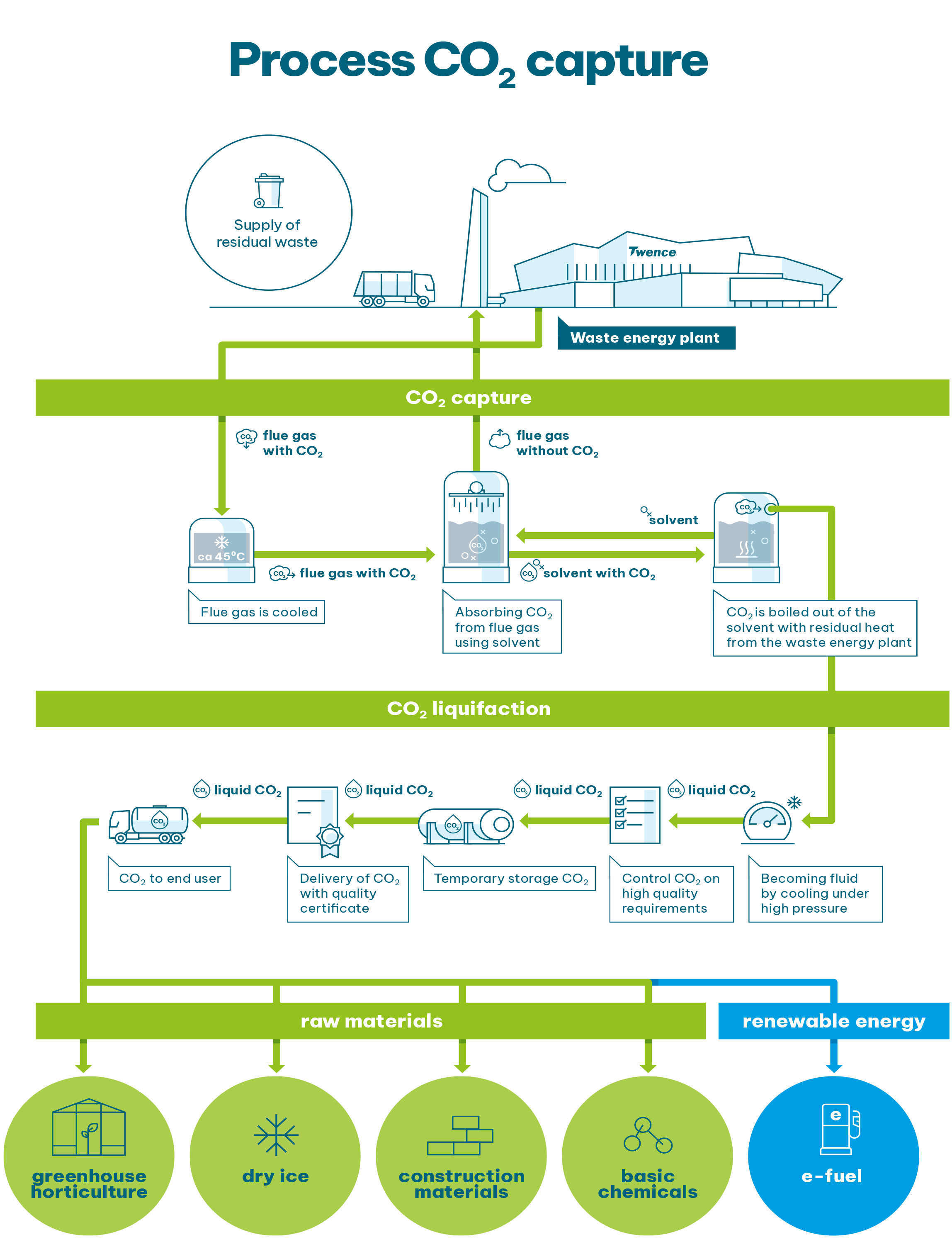TWENCE MAKES SUSTAINABLE ENERGY
even more sustainable through C02 capture

CO2 is a greenhouse gas. CO2 from fossil fuels, along with other greenhouse gases, is causing climate change: the earth is heating up. We want to reduce this worldwide. By capturing CO2, Twence contributes to the reduction of CO2 emissions in the waste-to-energy sector and to making the region more sustainable.

![]()
Energy and raw materials transition:
Our society is on the eve of an energy and raw materials transition. Energy will have to be generated almost completely sustainably. Raw materials will have to be used sparingly and reused as much as possible. In the Paris Climate Agreement of 2015, far-reaching targets were formulated to limit global warming. These have been subsequently translated into national targets. Compared to 1990, the Netherlands has set itself the target of reducing CO2 emissions by 49% by 2030 and by 95% by 2050. Under the current climate agreement, the waste to energy sector, of which Twence is part, has the obligation to reduce CO2 emissions by 1.1 million tonnes per year.
![]()
Climate impact:
Every tonne (which amounts to 1,000 kg CO2) captured sustainably instead of being released into the atmosphere has an impact comparable to planting 31 to 46 trees. Trees remove CO2 from the air and transform it through photosynthesis into oxygen and plant material. Photosynthesis is the process by which plants convert water and carbon dioxide into glucose (C6H12O6)and oxygen under the influence of sunlight(1).
![]()
Waste is a source of energy:
Twence tries to recycle waste as much as possible. But there is always some waste and business waste left that cannot be recycled and that is processed in the Waste Energy Plant (WEP). Twence mostly generates energy from this. Twence is the largest producer of sustainable energy in Overijssel. Twence produces 502 GWh of sustainable heat and 290 GWh of sustainable electricity annually. That is enough to supply 65,600 households with heat and 150,000 households with electricity for a year. What used to be regarded as waste is now a source of energy.
![]()
Generation of CO2 from waste:
But what actually is the relationship between CO2 and waste? During the combustion process in the WEP, flue gases are generated. Flue gases contain CO2. This CO2 is extracted from the flue gasses in three stages. During the first stage, the flue gases are cooled together with the CO2. In the second stage, the CO2 is absorbed from the flue gasses using solvent. The flue gases using solvent. The flue gases without CO2 are returned to the WEP. In the third stage, the flue gases with CO2 are separated as pure gas from the solvent by boiling it with residual heat from the WEP. However, in order to transport it, the CO2 must be liquid.
![]()
Under pressure, everything liquefies:
The gaseous CO2 is captured, dried, further purified and liquefied by pressurising and cooling it. The CO2 is then stored for subsequent transportation to the end user.
![]()
Closing loops:
Residual waste is not only a source of energy. As demonstrated, Twence also extract raw materials such as liquid CO2 to make greenhouse farming more sustainable. And so this closes the loop and makes Twence sustainable energy even more sustainable. This enables Twence to make a great contribution to the circular economy.
![]()
Capturing 100,000 tonnes of CO2:
Twence is currently constructing a large-scale CO2 capture plant that will be able to capture up to 100,000 tonnes of CO2 per annum. The plant is expected to be operational by the end of 2023.

Would you like to know more? Please visit our website: https://www.twence.com/projects/large-scale-co2-capture
Sources
1. https://www.encon.be/nl-BE/berekening-co2-compensatie-bomen